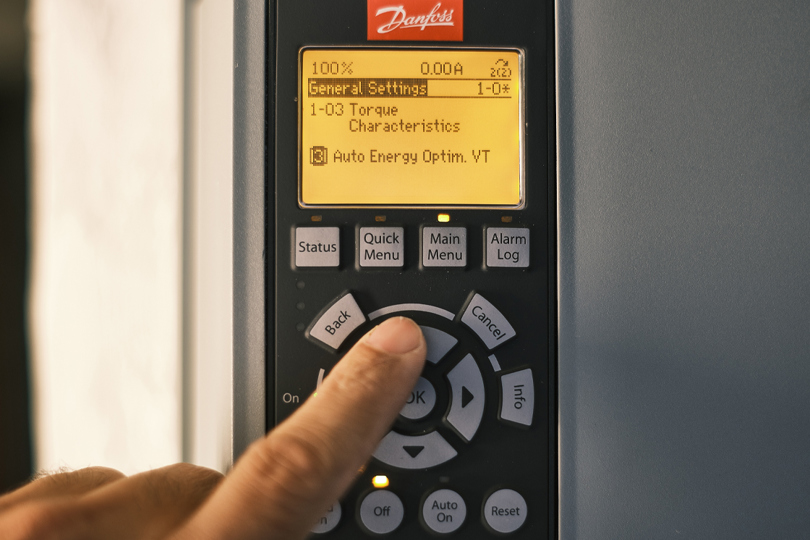Since July 2021, for the first time ever, drives sold in the European Union and EEA are required to meet minimum efficiency requirements. In Danfoss, we have worked hard to prepare for the labelling and documentation requirements. Electric motors are also covered by the new EU regulation and the efficiency requirements increased even more, but you don't have to live in the EU to reap the benefits of Danfoss variable frequency drives.
Using more efficient motors and drives is the foundation for an efficient system. And variable speed operation leads to significant energy savings (in the range of 15-40%). But what about the drive settings? Do they have an impact on the power consumption of the electric motor?
Danfoss Drives experts have attempted to answer this question and illustrate it practically. Several drives used for the ventilation of the Danfoss Drives factory and offices in Graasten, Denmark, were measured. The conclusion is that, depending on the specific application, the energy savings obtained from proper drive settings are comparable as order of magnitude with upgrading from the least efficient IE1 motor to the most efficient IE4 class.

The study results are published on our blog, Focus on Drives.
Helping our customers to achieve the highest efficiency level is of great importance to us. This is ensured by using the DrivePro® Life Cycle Service, Start-up, where Danfoss service experts make sure that the drive has the optimal settings and the highest possible efficiency is achieved.
If you are ready to invest in the highest efficiency motor, why not optimize your application with the appropriate drive settings?
